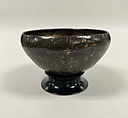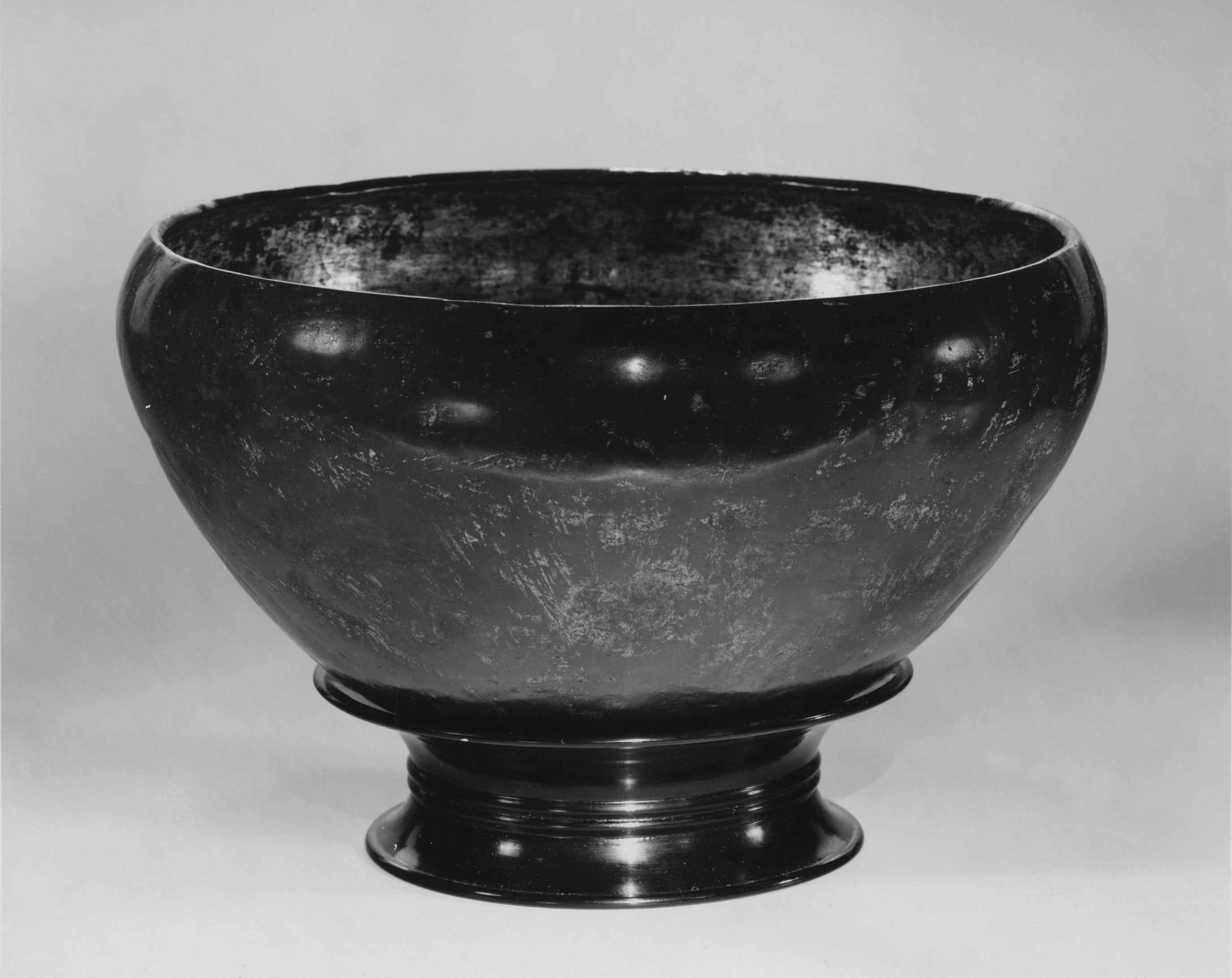Buddhist Ceremonial Alms Bowl
Nara period (710–794)
Not on view
Along with three garments, a stool, and a water strainer, the alms bowl was traditionally one of only six items that a Buddhist monk could own. While monks’ bowls were most often made of iron or wood, this bowl—cast in bronze, finished on a lathe, gilded, and supplied with a low stand—was probably placed on a Buddhist altar, where it would have been filled with offerings for a Buddhist deity. Its swelling body and the slight inward curve of its rim are typical of bowls produced in the eighth century.
This image cannot be enlarged, viewed at full screen, or downloaded.
This artwork is meant to be viewed from right to left. Scroll left to view more.





